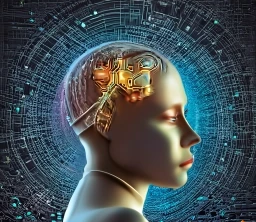Artificial Intelligence (AI) is more than a buzzword—it’s reshaping how colleges and universities operate, teach, and support their communities. In this blog, we explore the key AI concepts, tools, and best practices that are making waves in higher education, and how institutions can strategically harness these innovations.
What Is AI and Why Does It Matter in Education?
AI refers to the ability of machines to simulate human intelligence. In higher education, that means everything from predicting student success to automating administrative processes. Some of the core AI technologies driving change include:
- Machine Learning: Used to identify students at risk of dropping out or to suggest courses tailored to academic strengths.
- Natural Language Processing (NLP): Powers chatbots and essay grading systems that understand and respond to human language.
- Computer Vision: Enables innovations like AI-based exam proctoring and visual accessibility tools.
AI Tools Revolutionizing Higher Ed
Here’s a quick look at AI-powered platforms already making a difference:
- Chatbots (e.g., Ivy.ai, AdmitHub): Provide instant answers to student questions 24/7—from admissions to housing.
- Predictive Analytics (e.g., EAB Navigate, Civitas Learning): Help academic advisors intervene before students fall behind.
- Smart Tutoring Systems (e.g., Carnegie Learning): Offer personalized lessons based on each student’s learning behavior.
- Automated Grading (e.g., Gradescope): Speeds up grading, saves faculty time, and reduces bias.
Speech-to-Text Tools: Assist students with disabilities or non-native English speakers.
Best Practices for Using AI in Colleges and Universities
If your institution is considering AI, keep these best practices in mind:
- Set Clear Goals: Know what problem you’re solving—whether it’s student retention or easing admin burdens.
- Focus on Data Privacy: Be transparent and compliant with regulations like FERPA.
- Train Faculty and Staff: Help your people feel confident using AI tools, not threatened by them.
- Monitor for Bias: Regularly audit algorithms for fairness and inclusivity.
- Promote Transparency: Ensure AI decisions, like grading or admissions recommendations, are explainable.
The Upside of AI in Education
- Efficiency Gains: Automate repetitive tasks like scheduling and email responses.
- Better Student Support: Personalize learning and services to meet diverse student needs.
- Smarter Decision-Making: Use data insights to guide institutional strategy.
- Scalable Solutions: AI systems can support thousands of users at once.
Challenges to Watch For
- Bias and Fairness: Biased data can lead to biased outcomes.
- Security and Compliance: Institutions must protect sensitive student data.
- Change Management: Address resistance with communication and training.
- Budget Constraints: AI can be resource-intensive to implement and maintain.
Final Thoughts
AI has the power to enhance—not replace—human roles in education. When implemented thoughtfully, AI can help institutions operate more efficiently, support students more effectively, and make smarter decisions. The key lies in responsible innovation, continuous improvement, and keeping the student experience at the center of every decision.
Whether you’re a university leader, faculty member, or IT professional, now is the time to explore how AI can support your mission to educate and empower.









